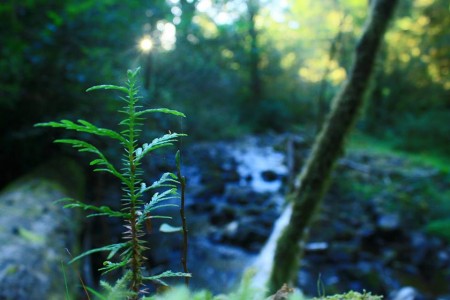
AERIAL HERBICIDES
Herbicides are a type of pesticide used to control unwanted foliage. The Environmental Protection Agency (EPA) defines pesticides as, “chemicals used to prevent, destroy, or repel pests,” and acknowledges that most pesticides contain chemicals that may be harmful to people, animals, and the environment. (http://www.epa.gov/pesticides/about/) According to the EPA, aerial herbicide spray is used to manage large tracts of land where ground spraying is not easily performed. Helicopters carrying a chemical mixture fly over target areas, distributing herbicides with spray wands. (http://www.epa.gov/agriculture/ag101/croppestmgt.html)
USES FOR TIMBER
While the use of aerial herbicides has been banned on federal forestlands, this practice is still used by private timber companies in Oregon. (https://news.google.com/newspapers?nid=1310&dat=19840302&id=_fdVAAAAIBAJ&sjid=jOEDAAAAIBAJ&pg=6226,256788&hl=en) Herbicides are used to control broadleaf vegetation — such as alder and vine maple — that compete with young Douglas Fir trees in their first years of growth. To maximize their harvest, timber companies often spray every spring and fall for the first three to five years after planting hardwood seedlings. (http://www.oregon.gov/odf/pages/herbicideinfo.aspx)
THE ISSUE
Spraying herbicides from helicopters has been a point of contention between private timber companies and the communities who live adjacent to forestlands. Timber and chemical companies have stated that these chemicals in isolation are not damaging to human health, however, herbicides often include a mixture of different chemicals – the effects of which have undergone very little testing. Herbicides can drift great distances and enter bodies of water, contaminating land, resources, and affecting human health. (http://www.beyondtoxics.org/resources/news/guest-viewpoint-toxic-legacy-herbicide-exposure/)
STATE REGULATIONS
Washington, Idaho, and California have significant buffer zones around homes, schools, and streams. Under the Right to Farm and Forest Act, Oregon timber companies are required to maintain a 60 food buffer around major fish bearing streams. Under current regulations, pilots must use their own judgment to determine appropriate wind conditions and approximate a 60 foot buffer zone from fish bearing streams – it is not required that they provide advanced notification to residents regarding spray events. Oregon’s Right to Farm and Forest Act (1971) also prevents citizens from taking legal action when they encounter herbicide drift from farming and agricultural sources. In addition, currently residents do not have access to the details of spray events after they occur, including the list of chemicals used, thus creating challenges for residents seeking medical attention. (http://www.beyondtoxics.org/resources/news/timberland-herbicide-spraying-sickens-community/)
